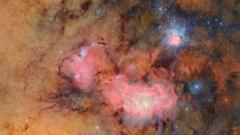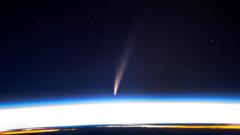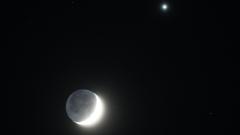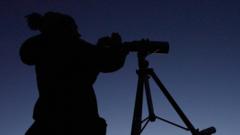Just in time for Halloween, the cosmos presents a thrilling narrative as two black holes command attention. One of these black holes is a notorious predator, poised to consume its second star in a mere five-year span, while the other is part of an extraordinary triple black hole system—a rare occurrence that defies the conventional understanding of astrophysical dynamics.
Black holes, the enigmatic entities anticipated by Einstein’s theory of general relativity over a century ago, have gained notoriety not just for their insatiable gravity but also for their pivotal role in the evolution of galaxies. Our Milky Way alone is said to host millions of black holes, the remnants of stars that collapsed into their own gravitational pull. Moreover, it’s established that nearly every galaxy harbors a supermassive black hole at its core—which can be millions to billions of times more massive than our Sun.
The attention on the ferocious black hole stems from an alarming flare detected five years ago, emanating from a galaxy located 215 million light-years from Earth. This flare signaled a "tidal disruption event" named AT1910qix, marking the moment a star strayed too close to the galaxy's supermassive black hole and met a catastrophic fate. Over a span of five months, gravitational forces gradually dismantled the star, transforming it into a ring-like structure around the black hole. Eventually, half of the star’s remnants succumbed to the black hole’s grasp, while the other half formed a drifting disc.
Presently, this remnant disc has stretched outward far enough to collide with another star every 48 hours, which passes through the debris, triggering explosive bursts of X-rays and additional radiation. An extensive international study led by astronomer Matt Nicholl from Queen's University, Belfast, employed various space telescopes, like the Chandra X-ray Observatory and the Hubble Space Telescope, to monitor these events closely. The findings of this significant research were recently published in the journal Nature.
As these cosmic dramas unfold, they remind us of the unpredictable and often violent behavior of black holes and the delicate balance of forces that govern the universe.













